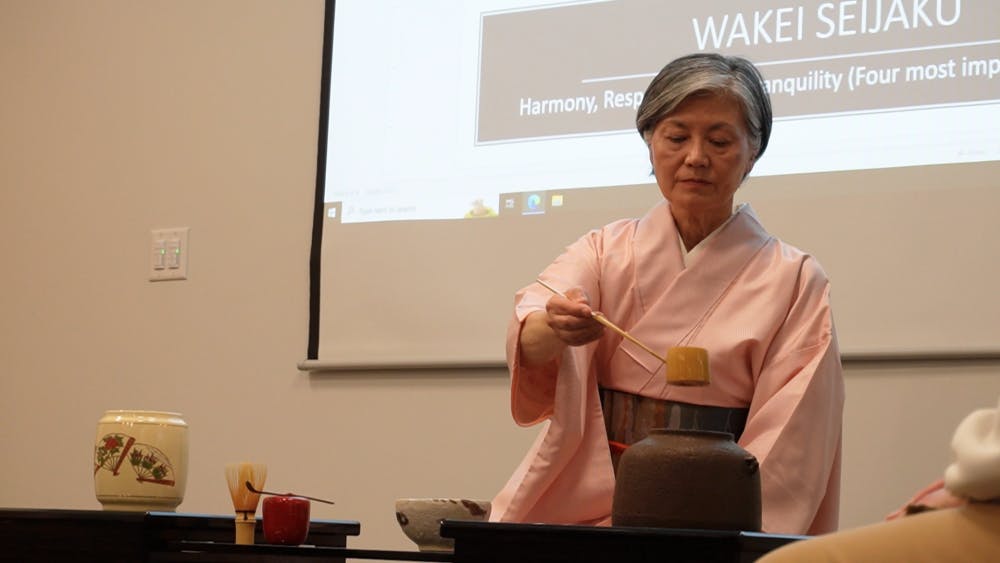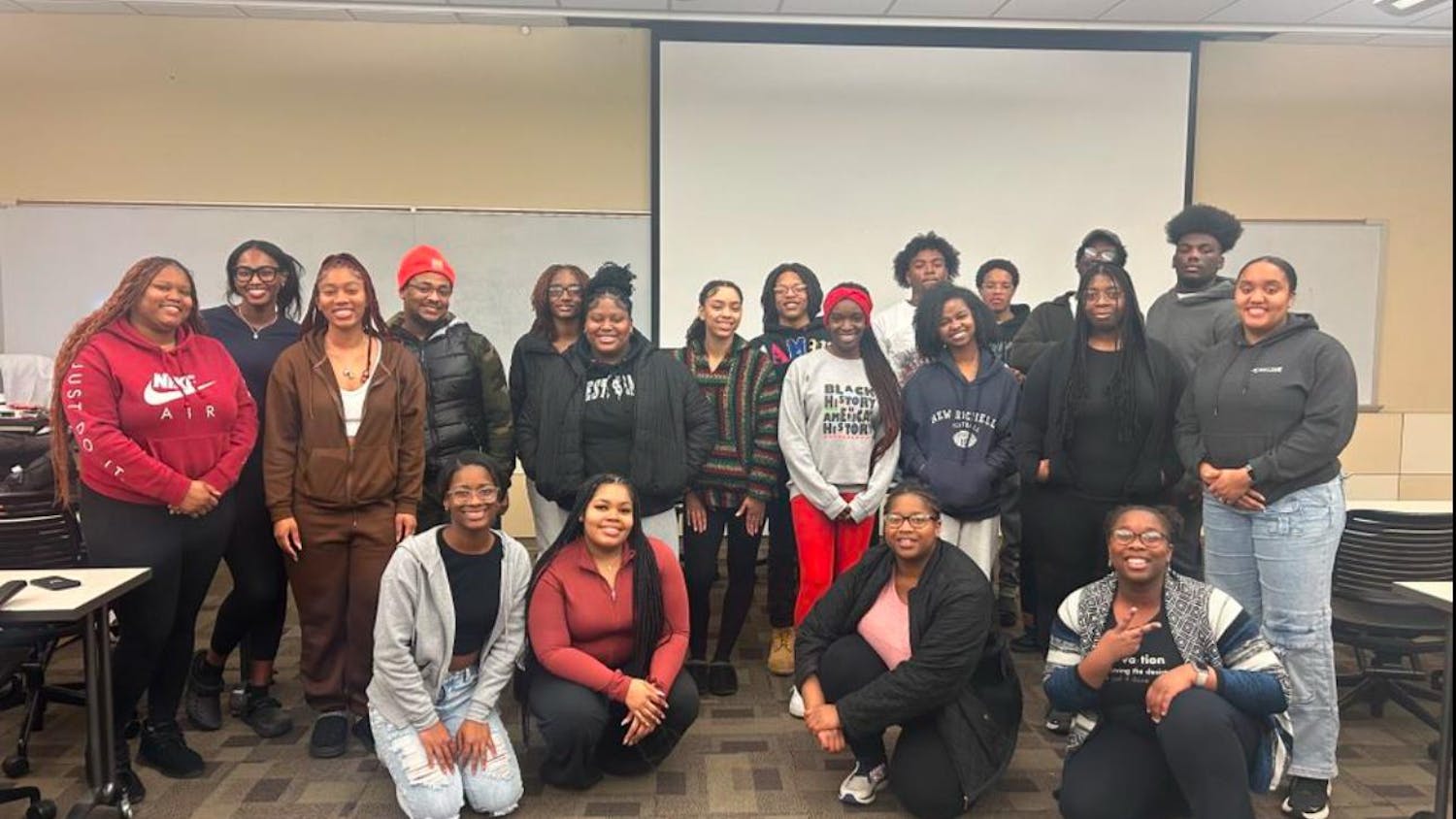Tea Ceremony | Photo by Isaac Warnecke | The Wright State Guardian
On Feb. 2, tea ceremony performer Kazumi Kawai presented a traditional Japanese ceremonial preparation and presentation of matcha (powdered green tea) to a packed house in the University Center for International Education.
History of thousands of years
(o)temae (お)手前), also known as the “Way of Tea,” is the manner in which the tea ceremony is performed.
“[The tea ceremony is a] time-honored institution in Japan, rooted in the principles of Zen Buddhism and founded upon the reverence of the beautiful in the daily routine of life. It is an aesthetic way of welcoming guests, in which everything is done according to an established order,” the Britannica page about the ceremony reads.
Japanese Professor Tomoko Tsuzuki-Deboer presented information about the history and significance of the ceremony, including the history of Sen no Rikyū, a tea ceremony master who raised the tea ceremony to the level of art.
“The tea ceremony was mostly by his creation and development. After Sen no Rikyu, he extended the joy of the tea ceremony to the ordinary people,” Tsuzuki-Deboer said. “The tea ceremony continues to live on and continues to reflect the lifestyle of the age.”

However, Japan first imported brewed tea from China in the 9th century, which allowed for the development of the tea ceremony in the 15th century.
Overall, the four most important elements of the tea ceremony developed (Wakei Seijaku): Harmony, Respect, Purity and Tranquility.
The ceremony
Kawai performed the brief Ryu-rei style of tea ceremony to students, but tea ceremonies in Japan can last as long as all day. According to Kawai, the training for doing such ceremonies takes at least 10 years before students are ready to perform.
Kawai performed the brief ceremony twice, once for each pair of volunteers. Kawai faced the audience in a sitting position behind a chaban (tea table) on which Kawai prepared the tea. The guests sat perpendicular to the audience off to the left side of the room between Kawai and the audience.
A ceremony begins with the cleansing and setting of utensils, matcha teaware and bowl before the guests; it is important for this to be done in an aesthetically pleasing manner.
After, the host may begin the preparation of matcha. Kawai added hot water and matcha into the bowl, whisking it together into a thin paste.
Kawai then informed the guests that they may eat their sweet red bean dessert before drinking the tea.
The bowl was then presented to the pair of volunteers. Professor Tsuzuki-Deboer informed the volunteers of the etiquette required: the rotation, admiration, drinking and cleaning of the bowls in which the tea was presented.
Kawai then cleansed the bowls and reset the tea, signaling the ceremony was complete.
At the conclusion of the ceremony, Kawai and Professor Tsuzuki-Deboer opened the floor for questions from the audience.
Students’ perspectives
Student Caleb Fasnacht attended because of a personal interest in tea but appreciated the cultural aspects of the ceremony as well.
“It was great. It was so much fun to see everything and try to analyze why things are happening,” Fasnach said.











